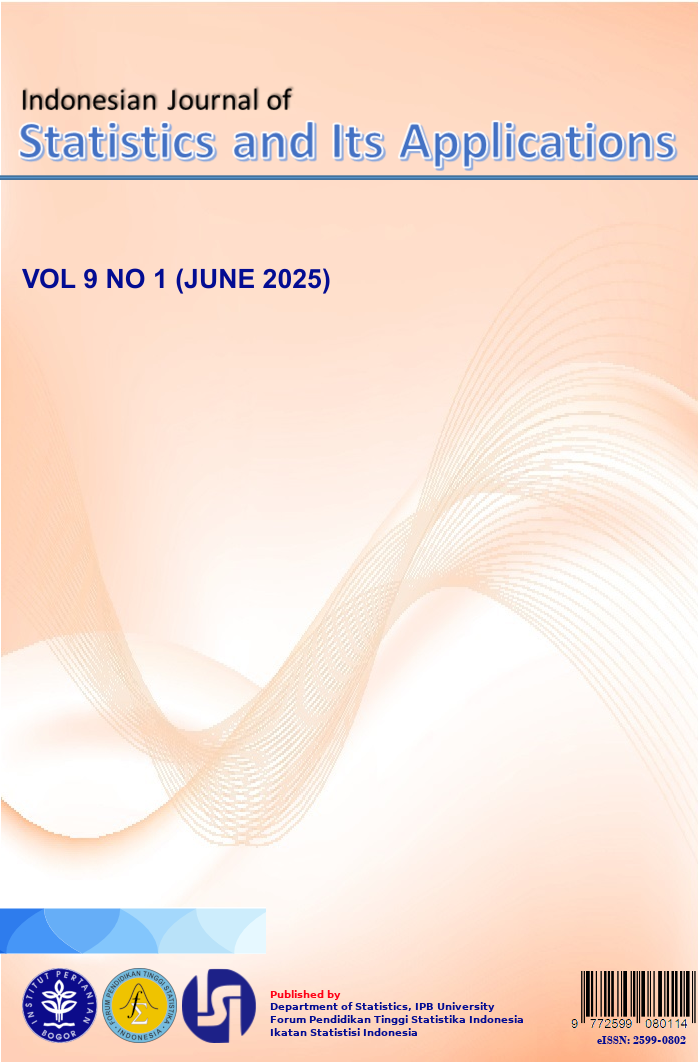Early Preeclampsia Detection Using XGBoost-Cox Proportional Hazard Model
Main Article Content
Abstract
Various prognostic models based on survival analysis methods have been proposed to predict the risk of preeclampsia (PE). To develop a more accurate yet interpretable prediction approach, we utilized clinical data from pregnant women collected at a hospital in Jakarta and applied the XGBoost-Cox Proportional Hazard Model (XGB-Cox). This model integrates the predictive power of the XGBoost machine learning algorithm with the Cox Proportional Hazard (Cox-PH) model, which estimates the effect of covariates on event time. Our results show that the XGB-Cox model outperforms the traditional Cox-PH model based on four evaluation metrics: log-likelihood, log-rank test, concordance index (C-index), and Brier score. The XGB-Cox model achieved a higher C-index of 0.8908 compared to 0.7548 for Cox-PH, indicating improved risk discrimination. Kaplan-Meier curves suggest that XGB-Cox provides better separation across risk quartiles. While XGB-Cox generally yields lower Brier Scores, its performance declines at later gestational weeks. The Cox-PH model remains superior in interpretability, offering clear hazard ratios, while XGB-Cox enhances model fitness and still provides meaningful insights into feature importance. Additionally, sensitivity analysis underscores the need to carefully determine the proportion of censored data, as excessive censoring affects model stability. These findings suggest that XGB-Cox provides a robust predictive framework for early PE risk assessment, supporting its potential application in clinical decision-making for maternal healthcare.

